Verses from the Apocalypse
September 6 – October 13, 2019
Foxy Production
2 East Broadway
New York, NY
Helena Anrather
28 Elizabeth Street
New York, NY
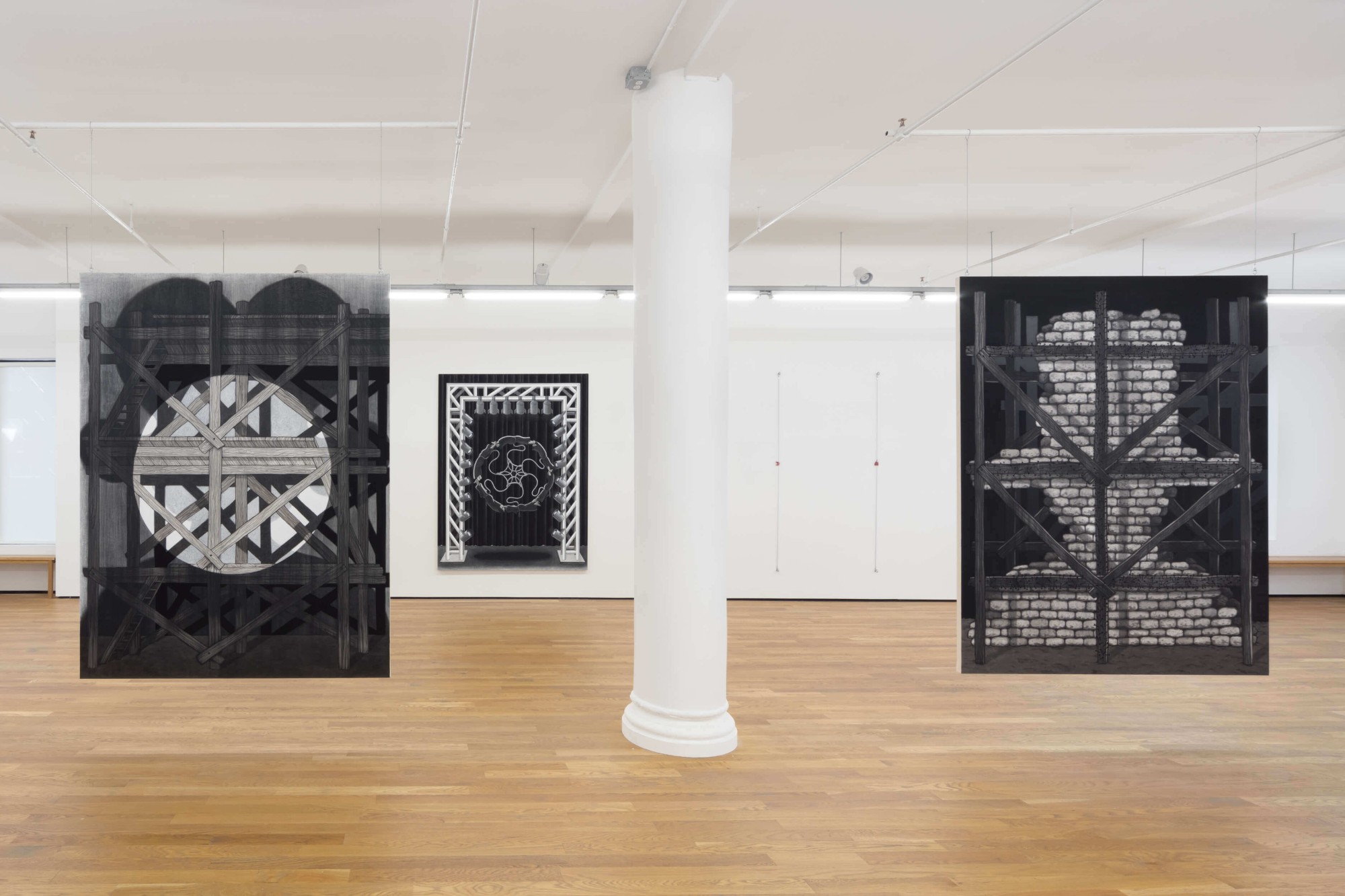
Installation view: Verses from the Apocalypse, Foxy Production, New York, 2019

Installation view: Verses from the Apocalypse, Foxy Production, New York, 2019

Mister Capital. 2019. 84" x 64". Oil, acrylic, ink, pastel, charcoal, graphite on canvas

Mister Capital. 2019 (verso)

Installation view: Verses from the Apocalypse, Foxy Production, New York, 2019
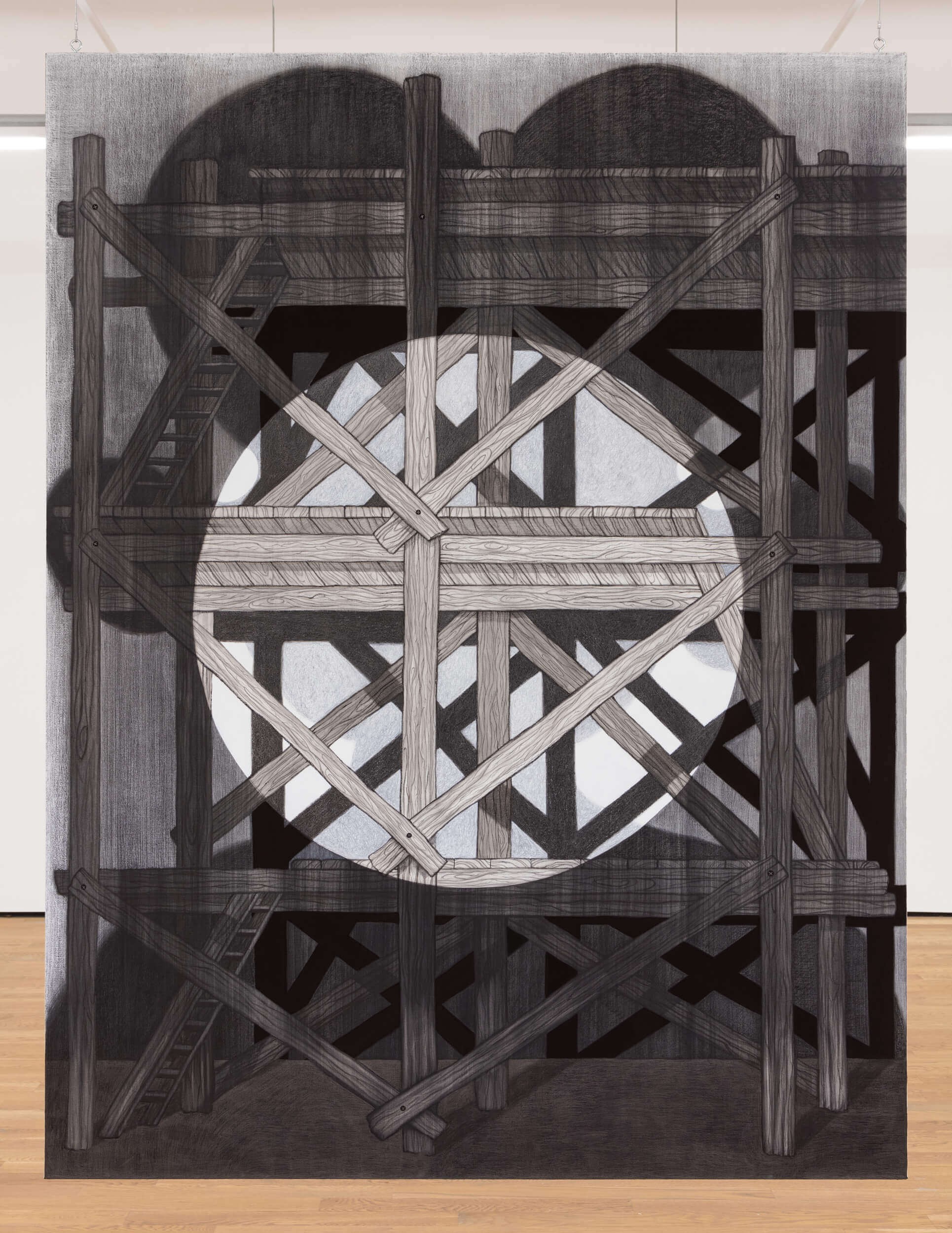
Madame Earth. 2019. 84" x 64". Oil, acrylic, ink, pastel, charcoal, graphite on canvas
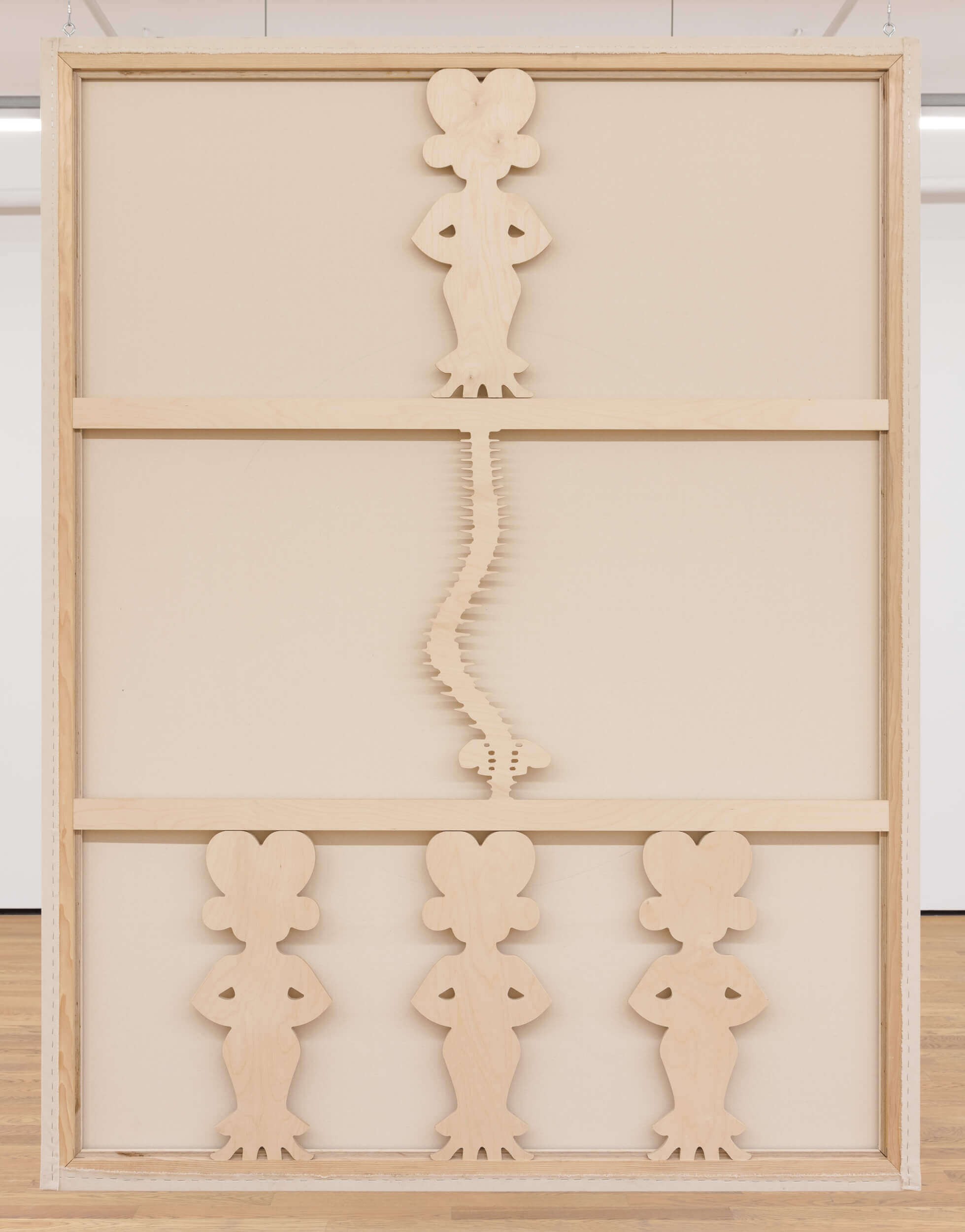
Madame Earth. 2019 (verso)
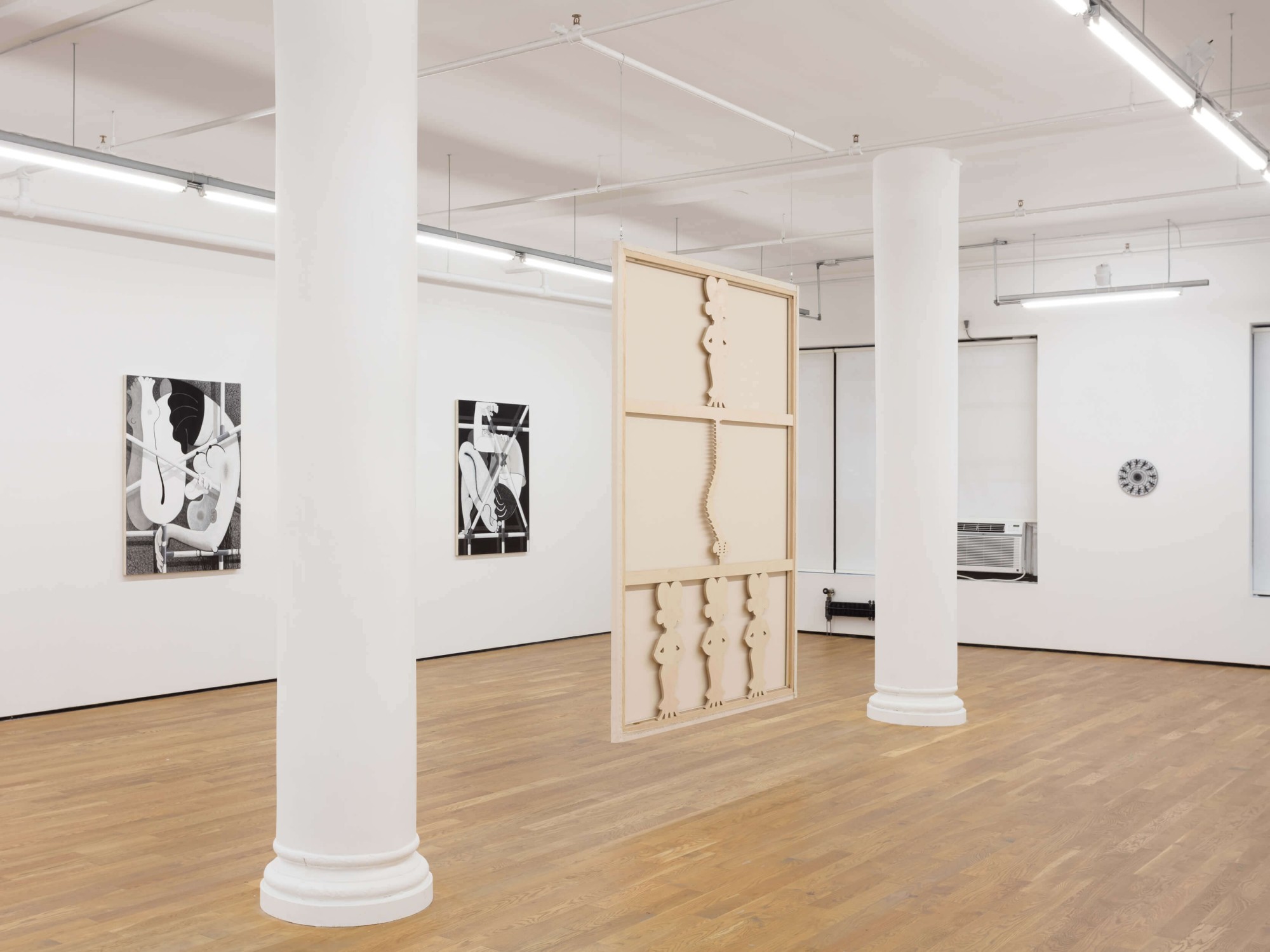

Installation view: Verses from the Apocalypse, Foxy Production, New York, 2019
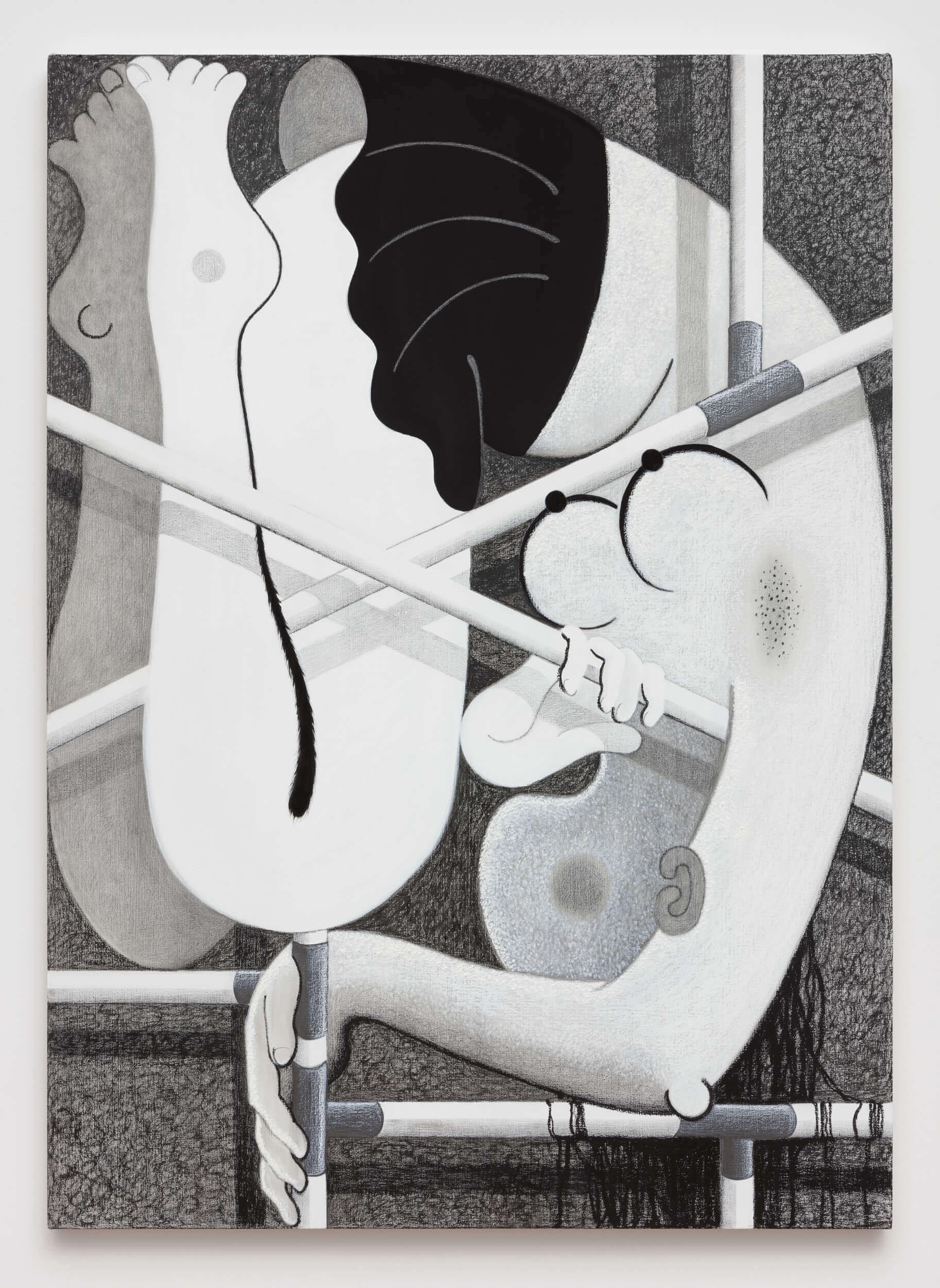
Character #13. 2019. 50" x 36". Oil, acrylic, ink, pastel, charcoal, graphite on canvas
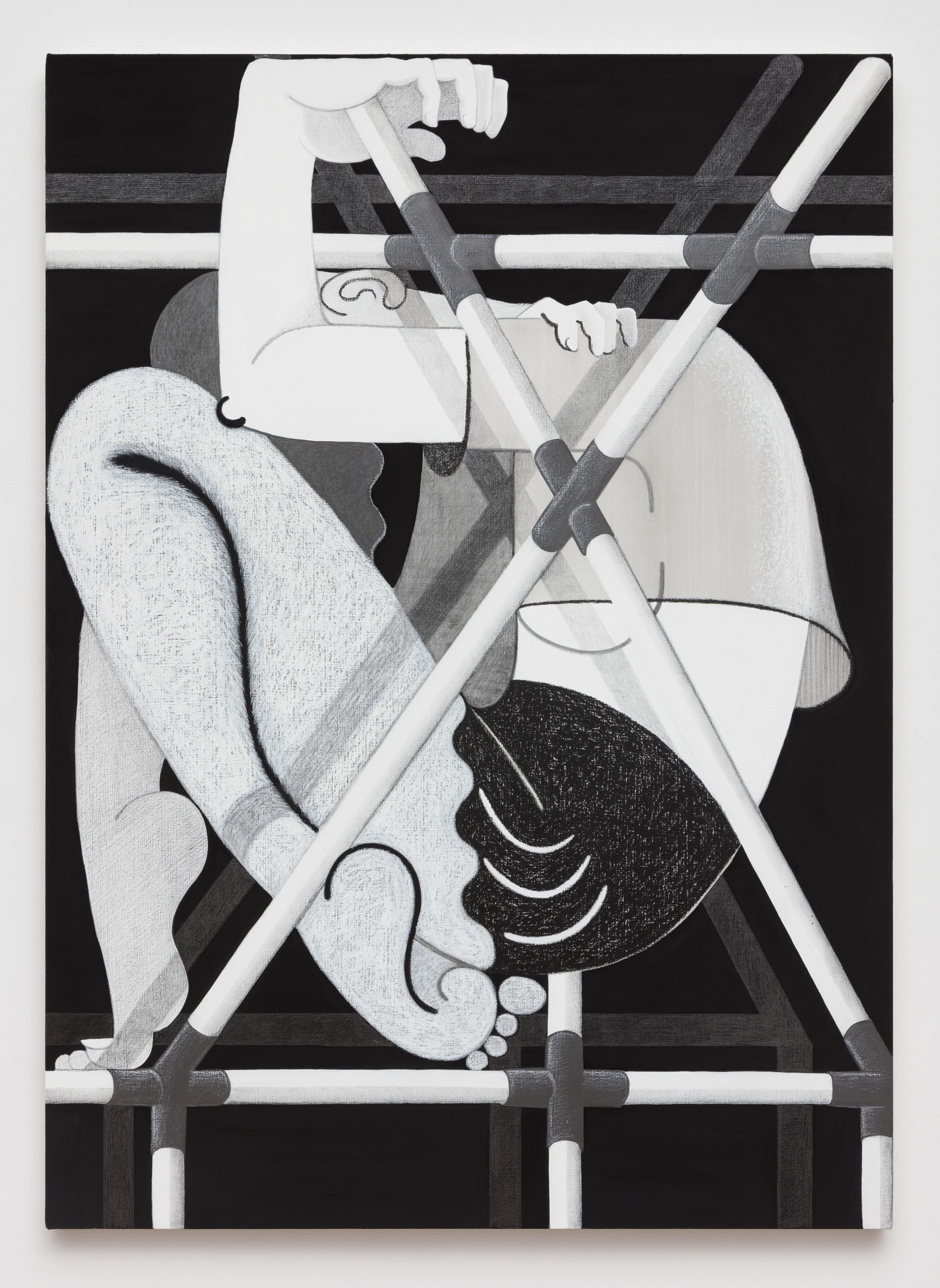
Character #15. 2019. 50" x 36". Oil, acrylic, ink, pastel, charcoal, graphite on canvas
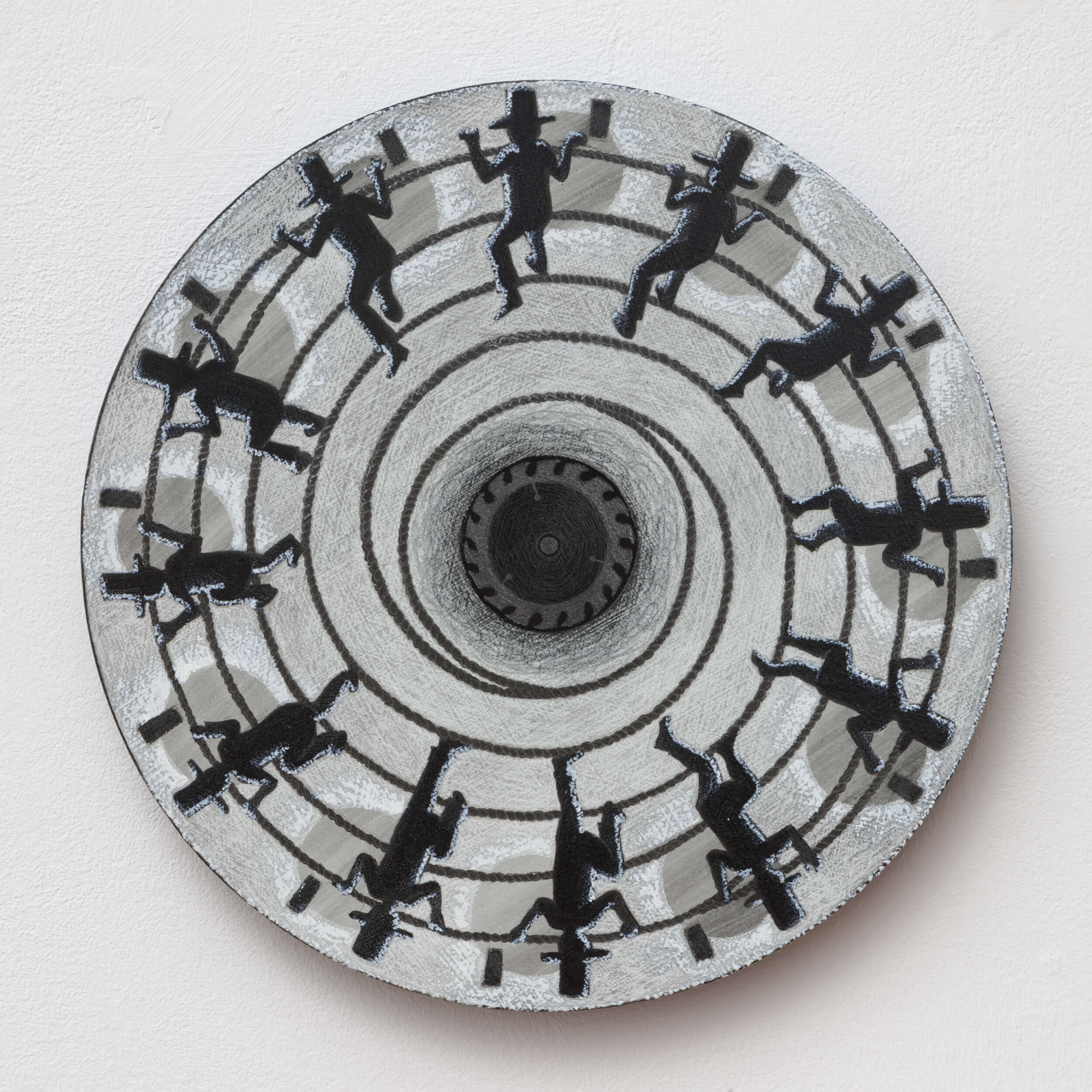
Reign of the Idle Hands #2. 2019. 12" diameter. Oil, acrylic, ink, pastel, charcoal, graphite on birch
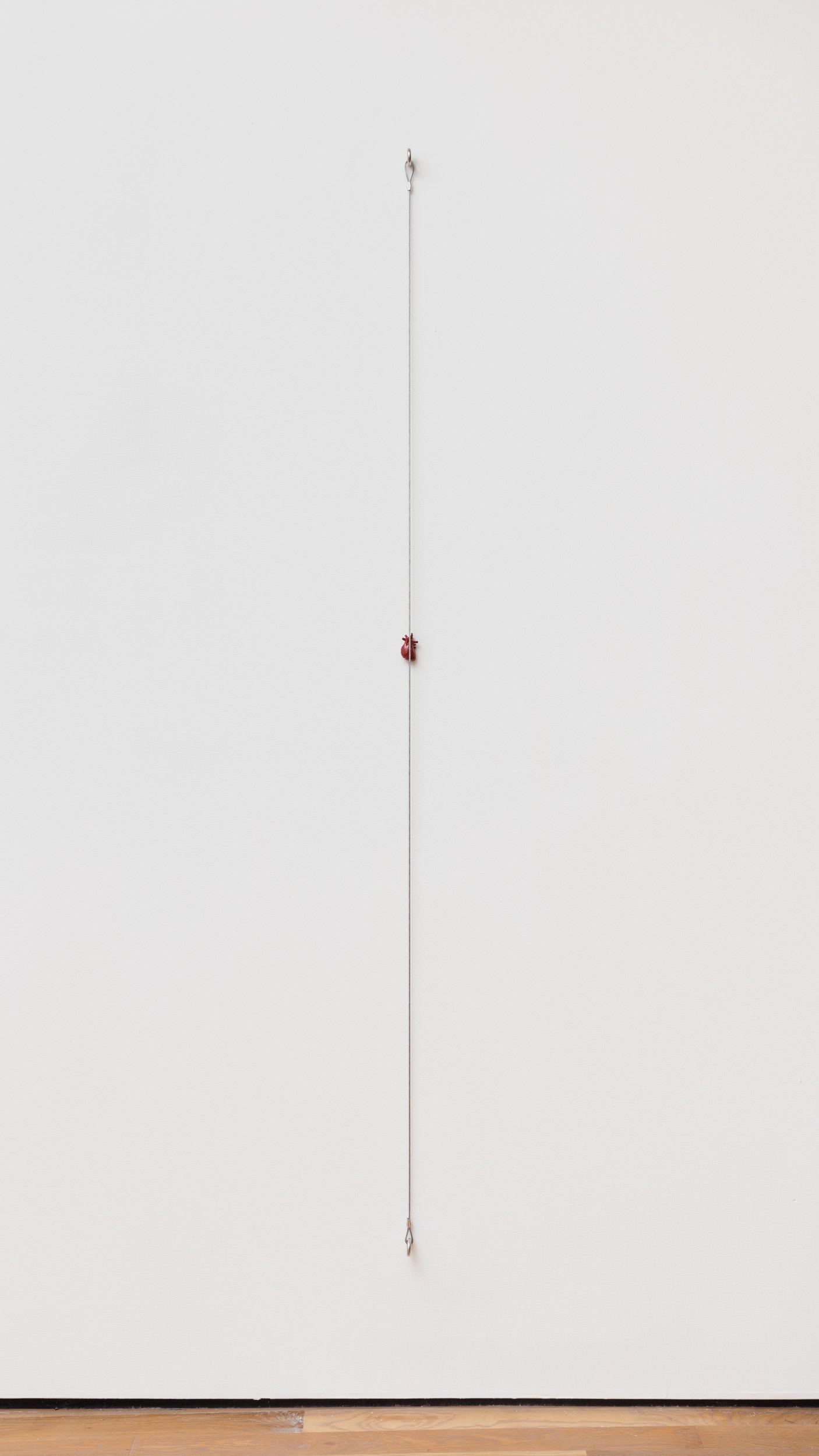
The Idol’s Plea #1. 2019. 84" x 1.5" x 1.75". Metal and epoxy
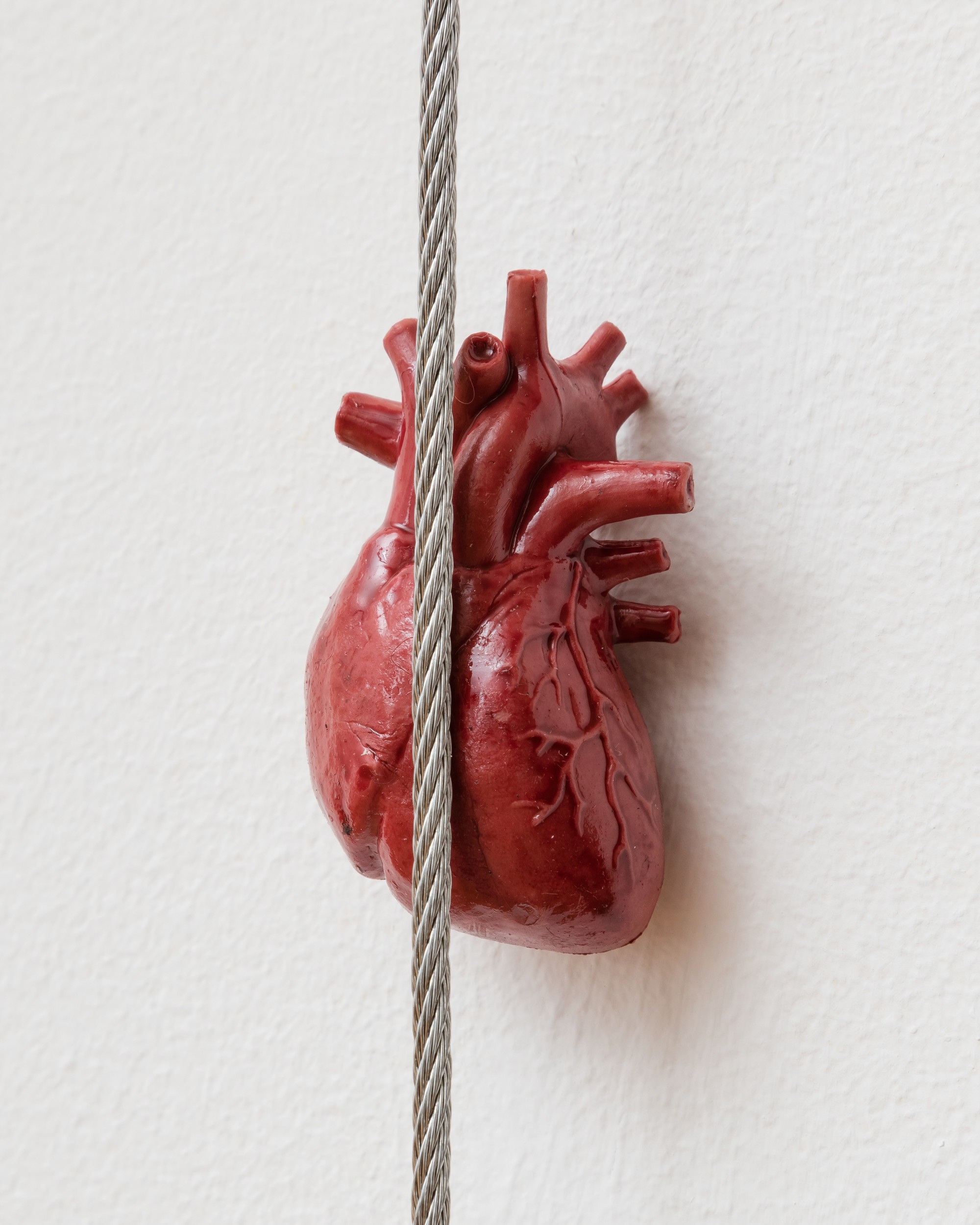
The Idol’s Plea #1. 2019 (detail)
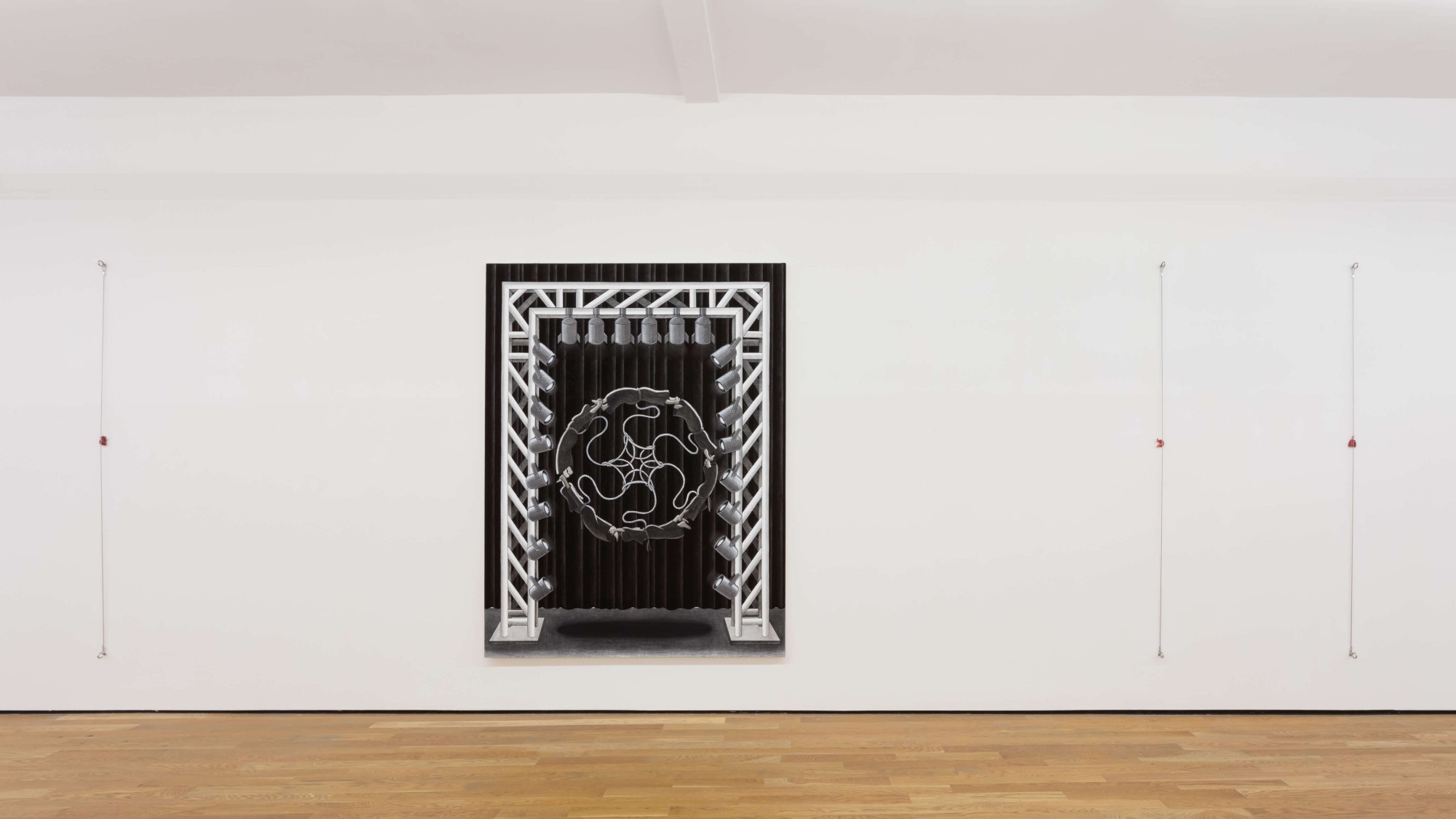
Installation view: Verses from the Apocalypse, Foxy Production, New York, 2019
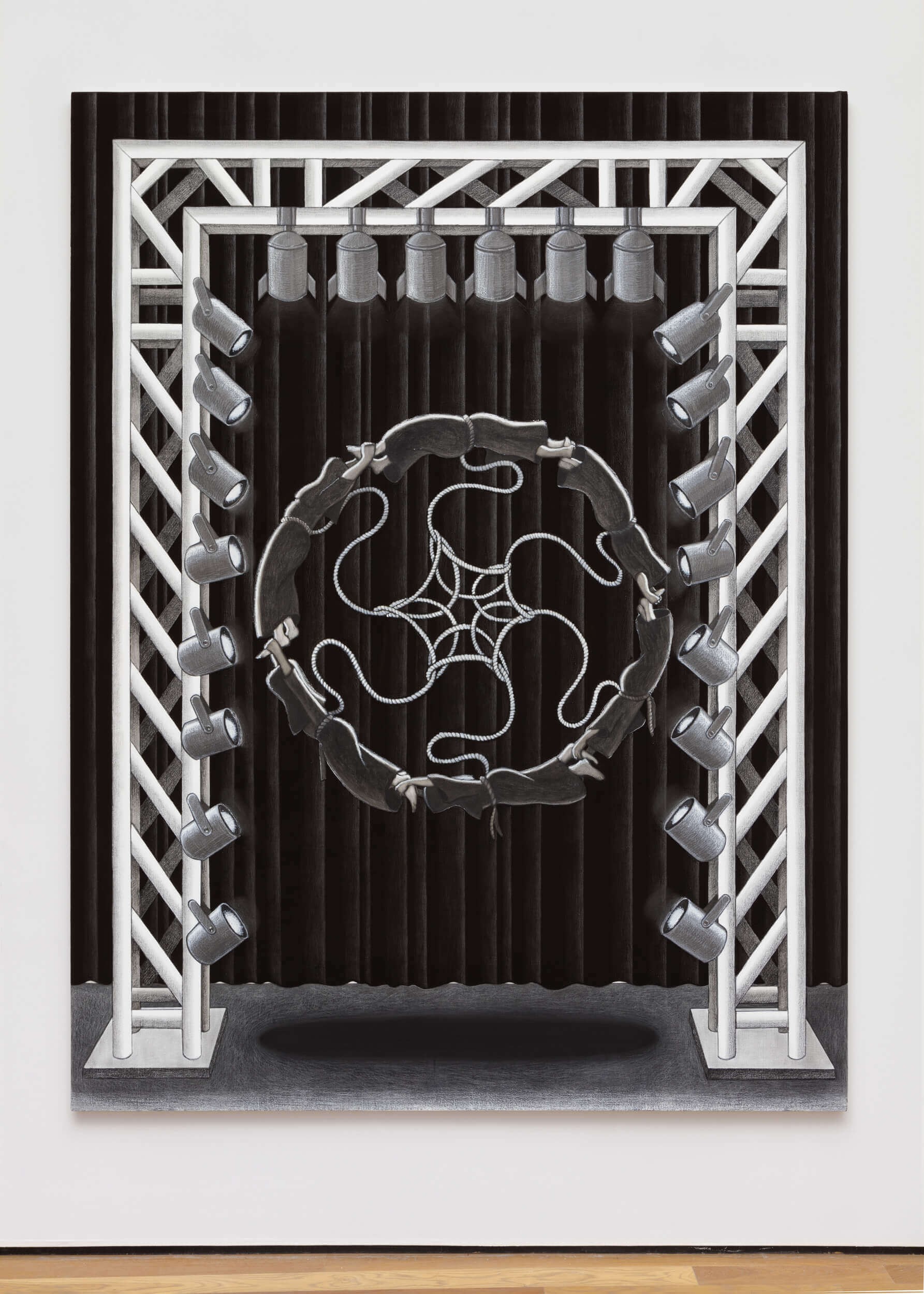
Yearnings of the Flesh. 2019. 84" x 64". Oil, acrylic, ink, pastel, charcoal, graphite on canvas

Yearnings of the Flesh. 2019 (verso)

The Idol’s Plea #2. 2019. 84" x 1.5" x 1.75". Metal and epoxy
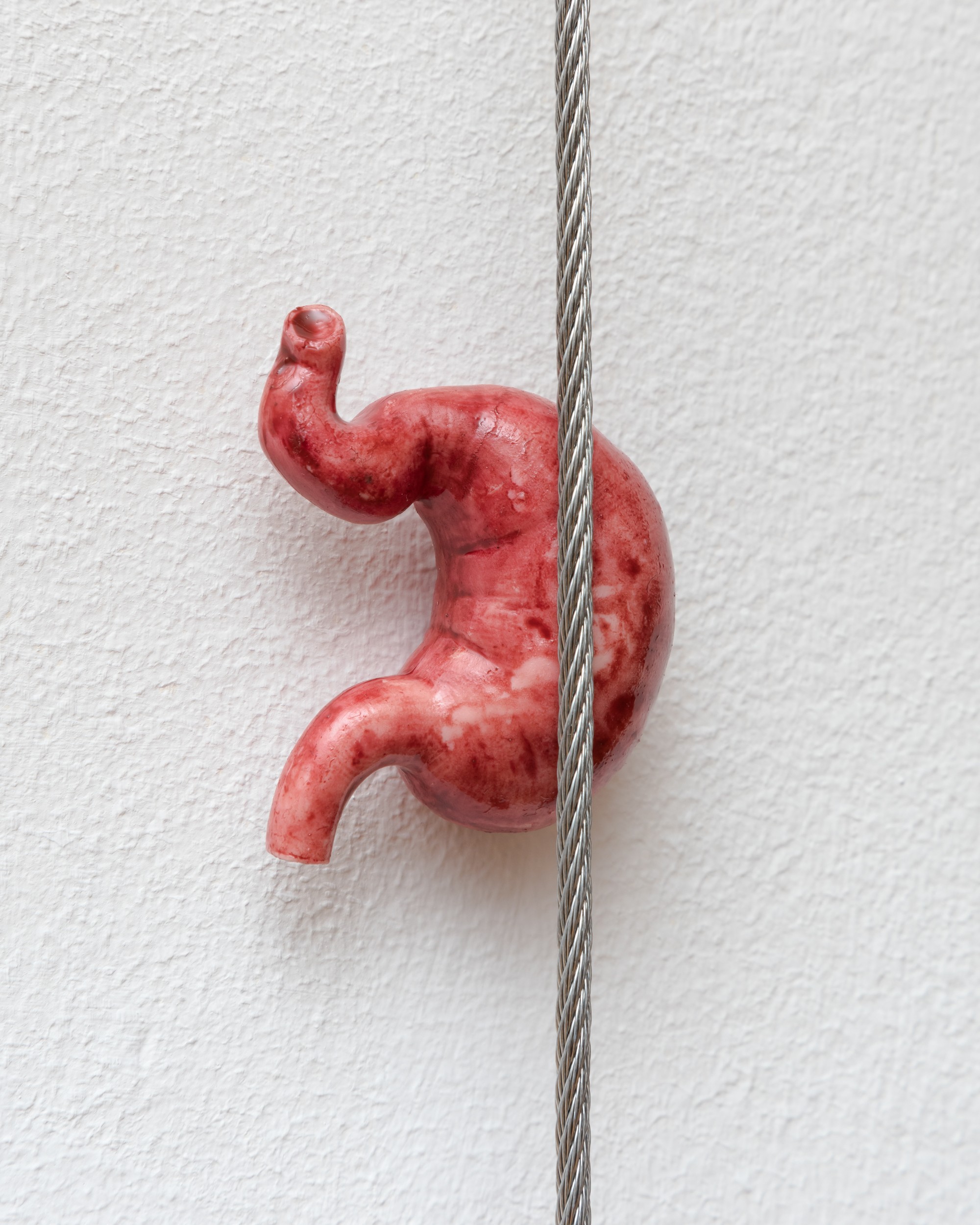
The Idol’s Plea #3. 2019 (detail)

The Idol’s Plea #3. 2019. 84" x 1.5" x 1.75". Metal and epoxy
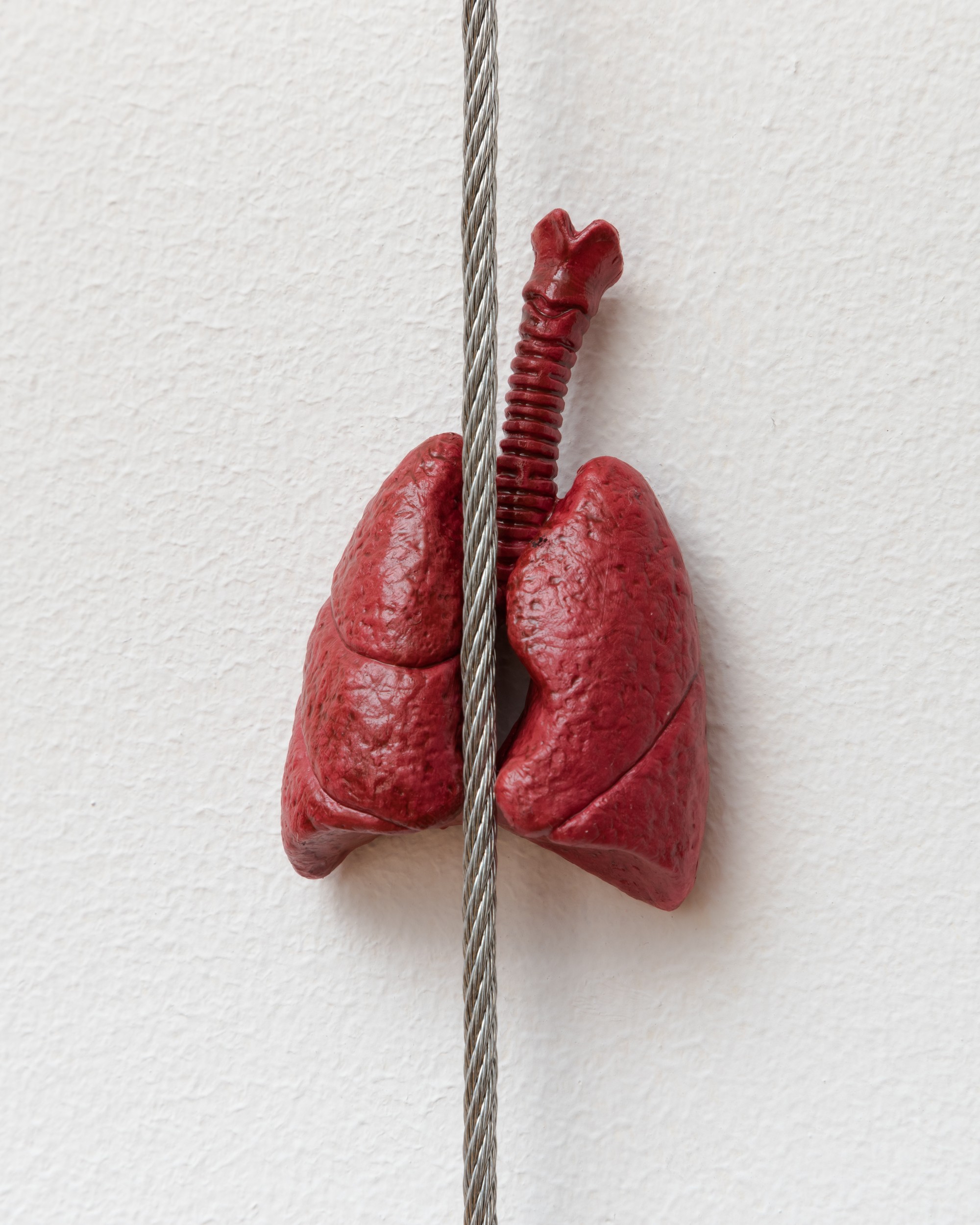
The Idol’s Plea #2. 2019 (detail)

Installation view: Verses from the Apocalypse, Foxy Production, New York, 2019

Reign of the Idle Hands #1. 2019. 12" diameter. Oil, acrylic, ink, pastel, charcoal, graphite on birch

Character #14. 2019. 50" x 36". Oil, acrylic, ink, pastel, charcoal, graphite on canvas
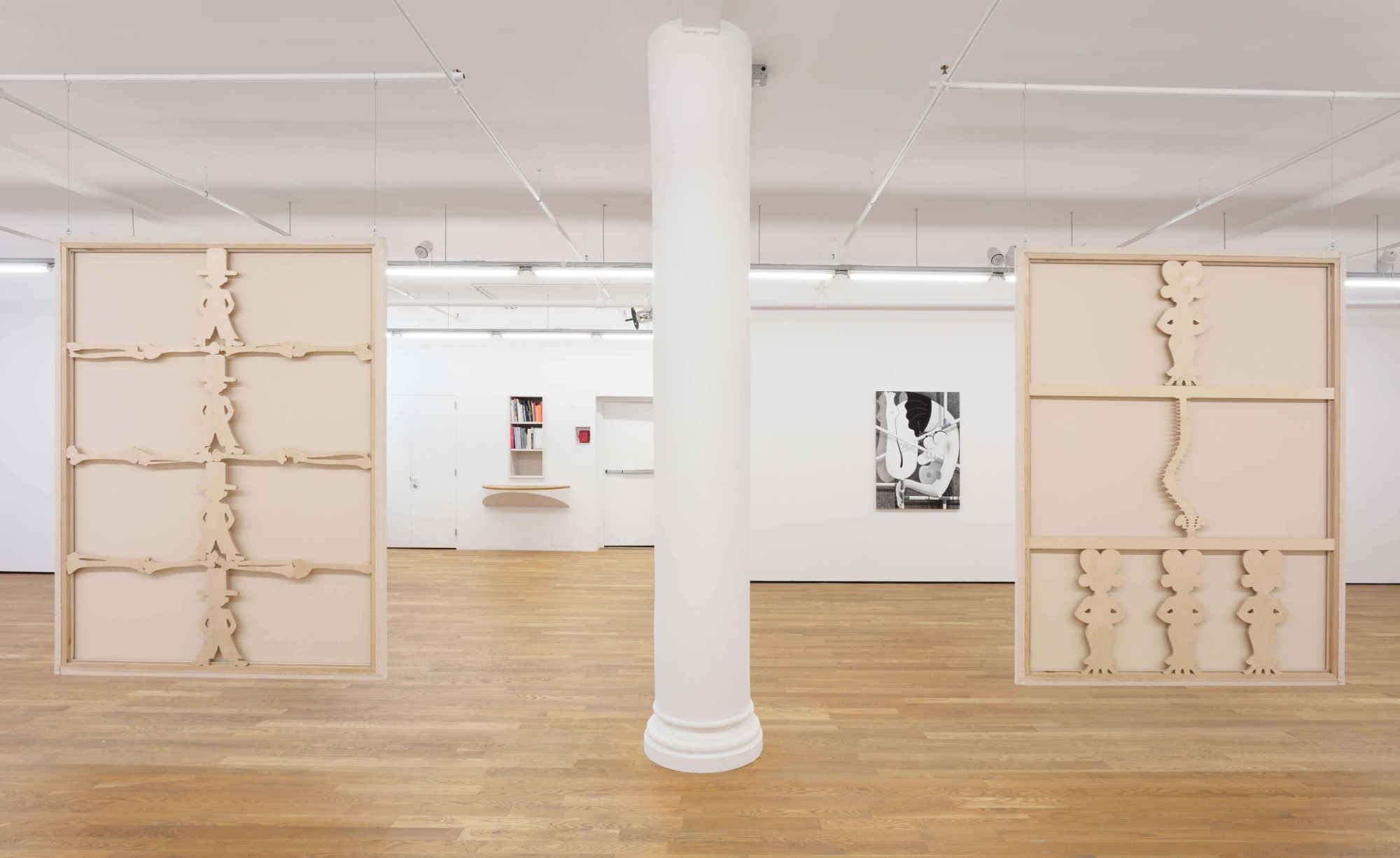
Installation view: Verses from the Apocalypse, Foxy Production, New York, 2019
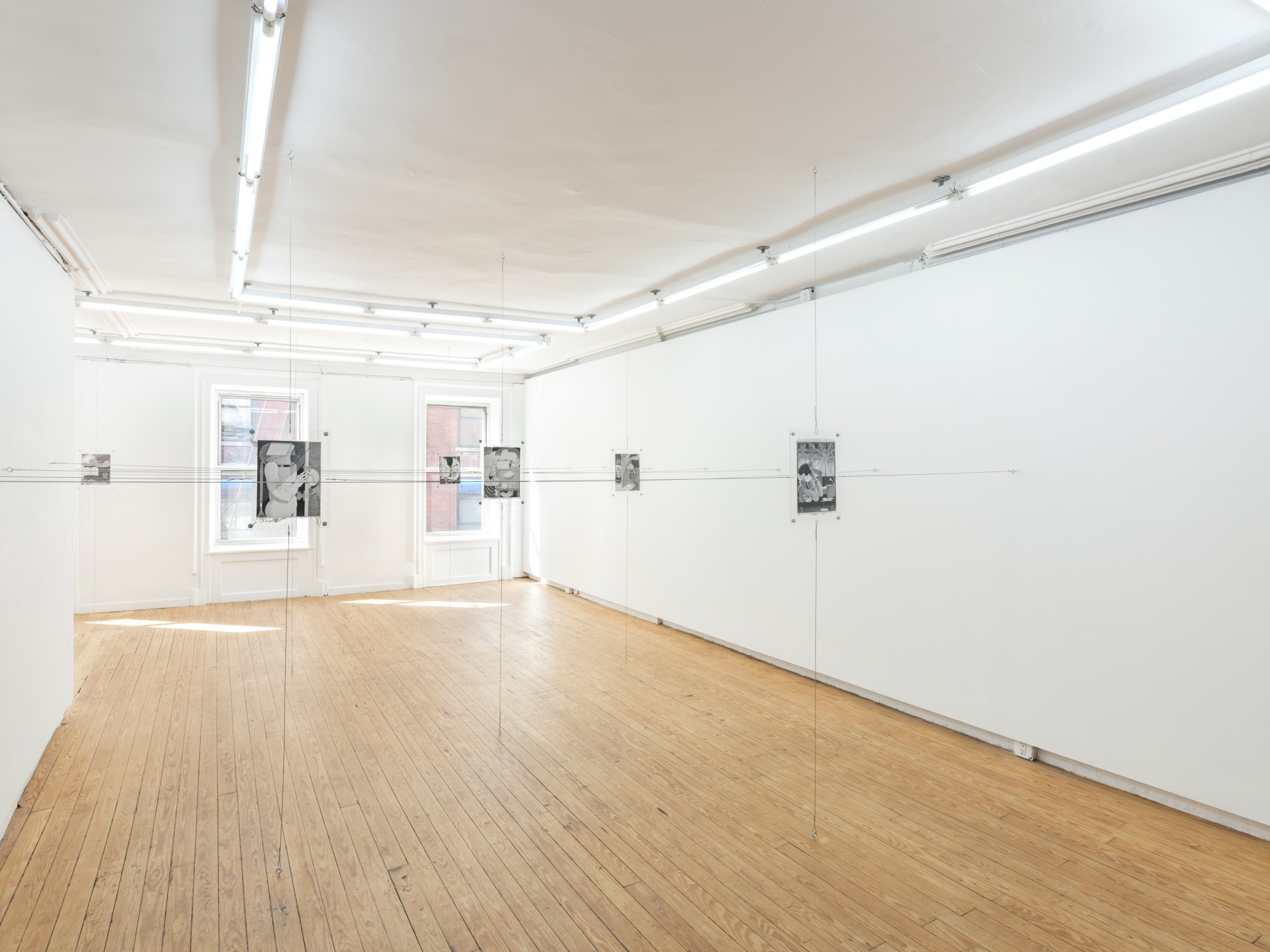
Installation view: Verses from the Apocalypse, Helena Anrather, New York, 2019
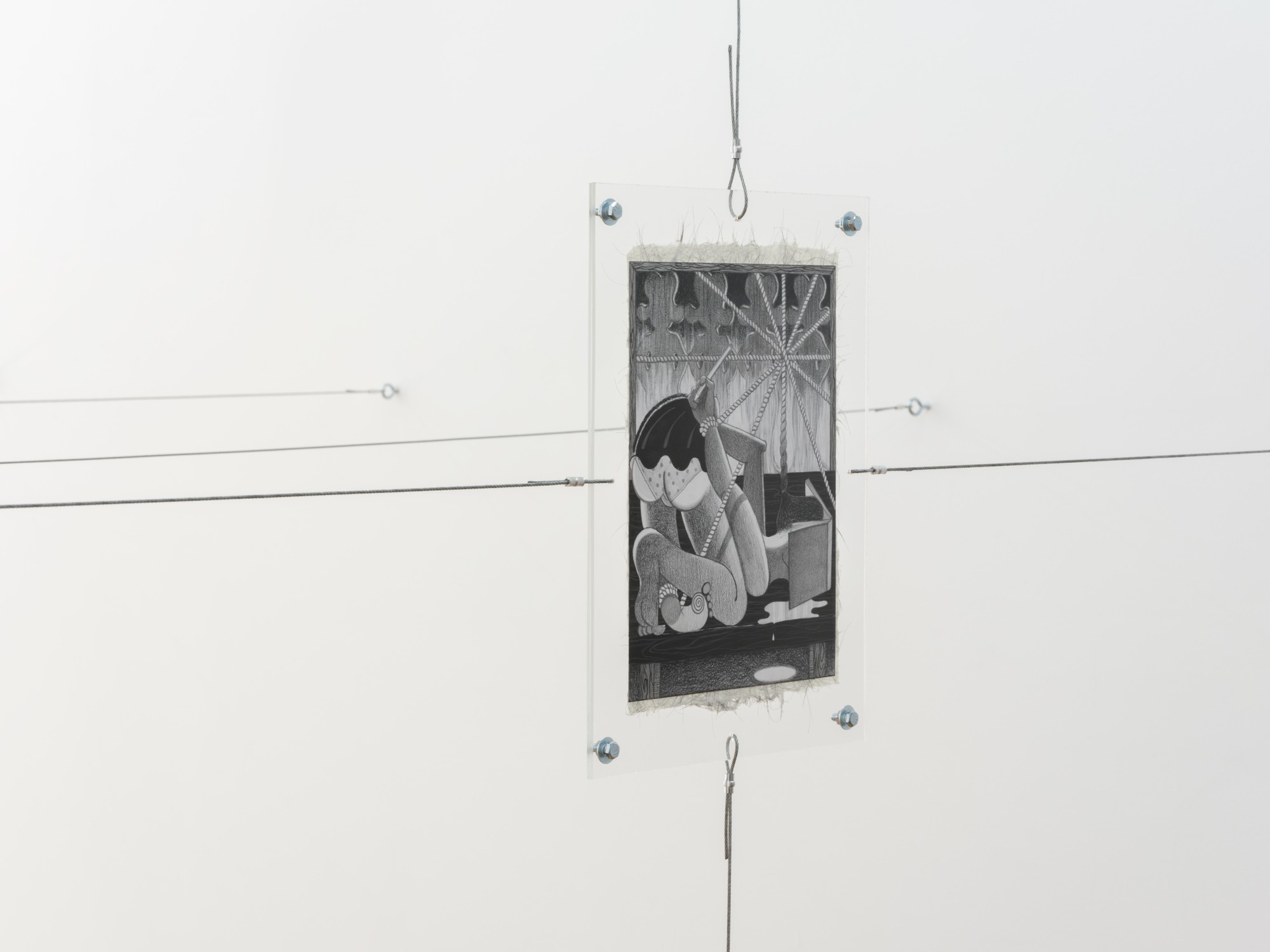


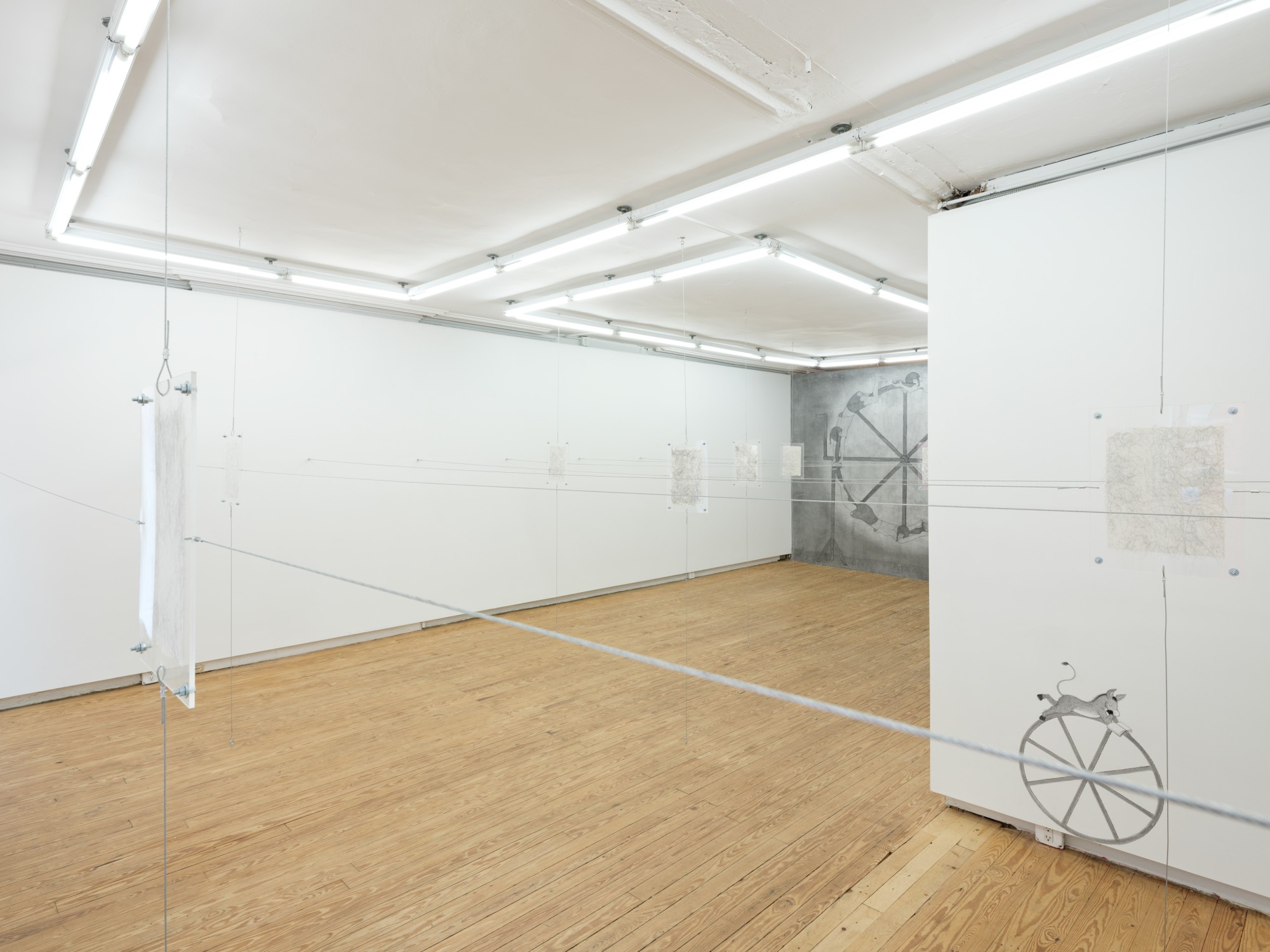
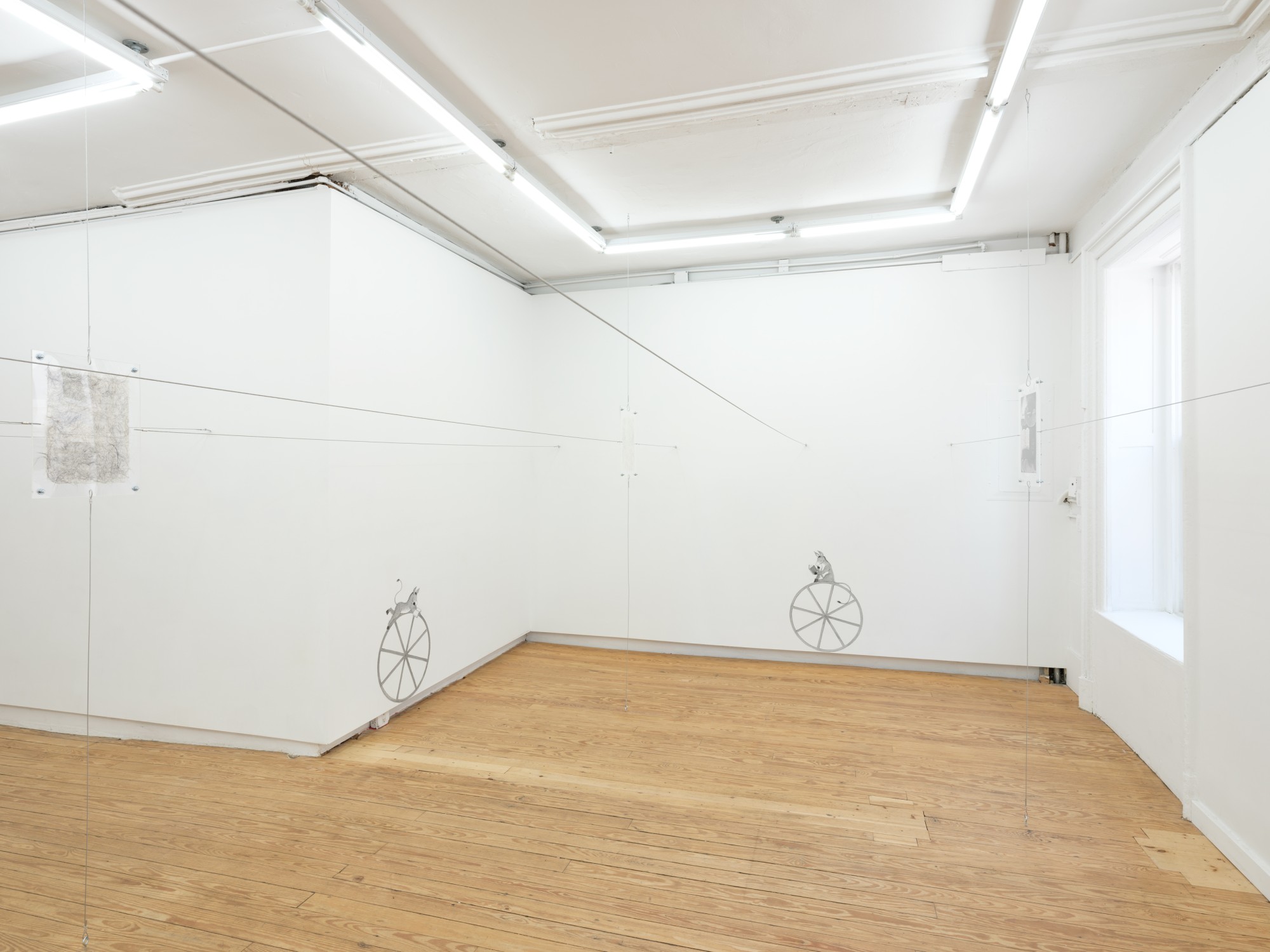

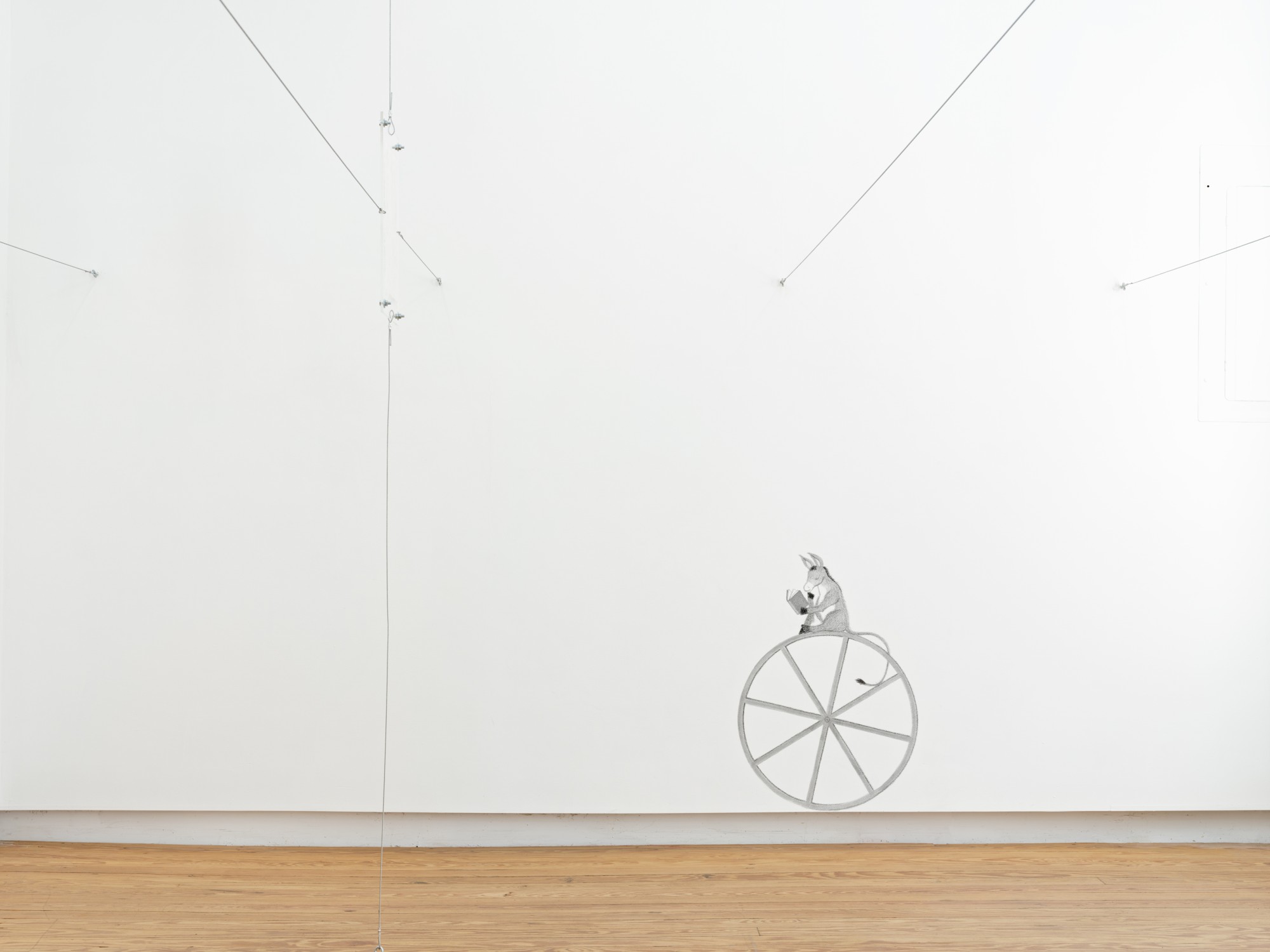

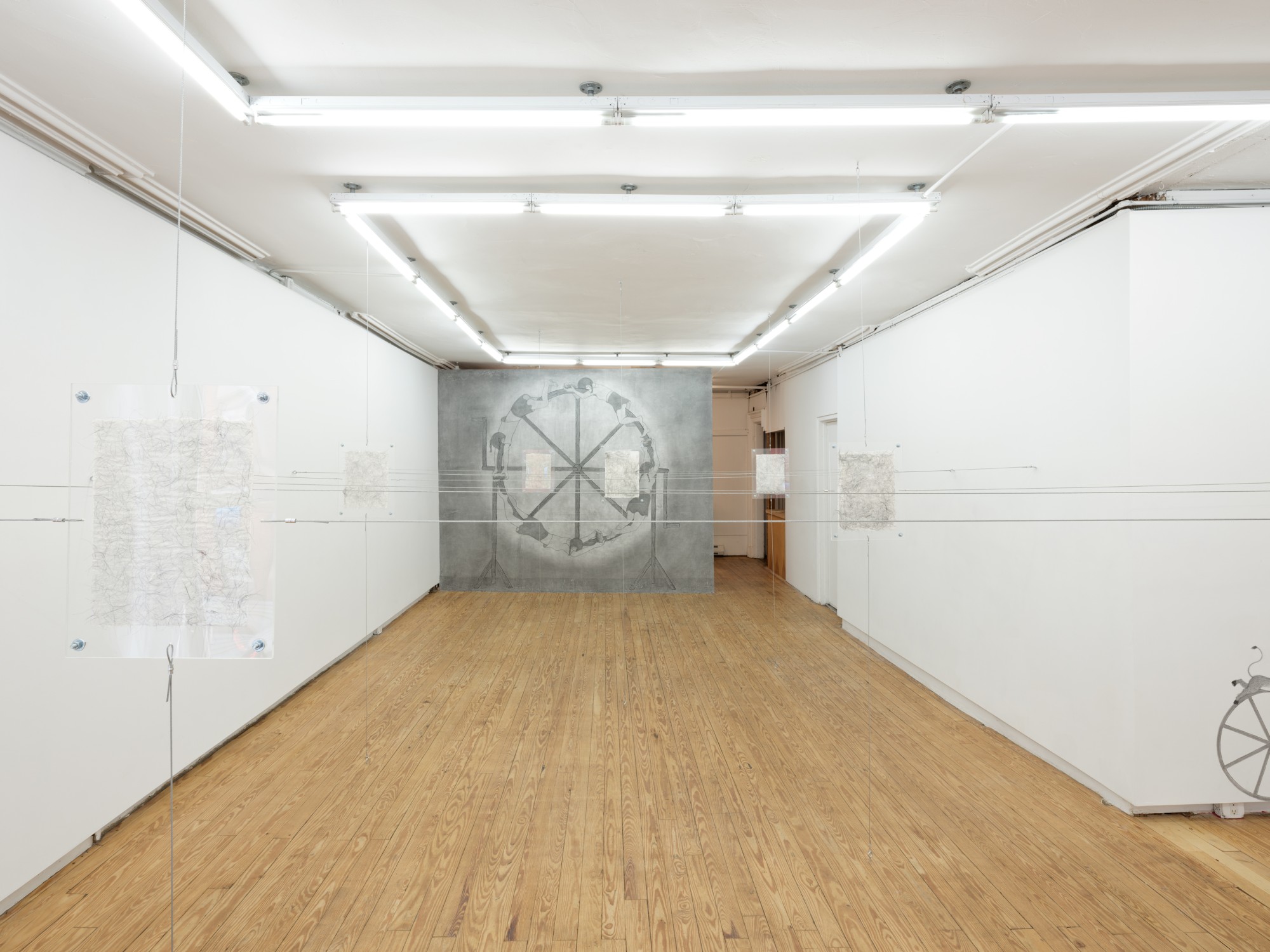
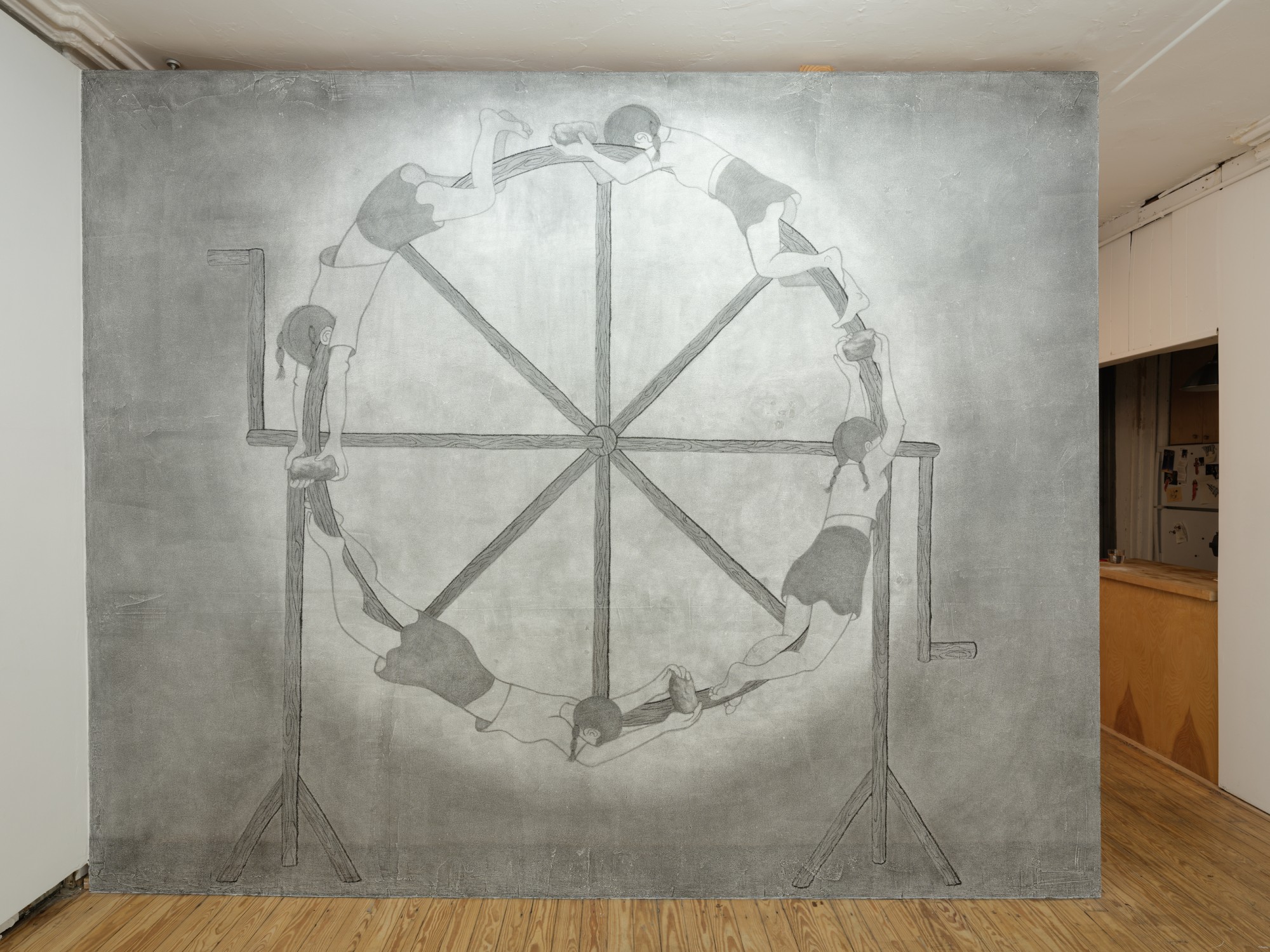
Apparatus for Silence. 2019. 11' x 10'. Graphite, charcoal, pastel on wall
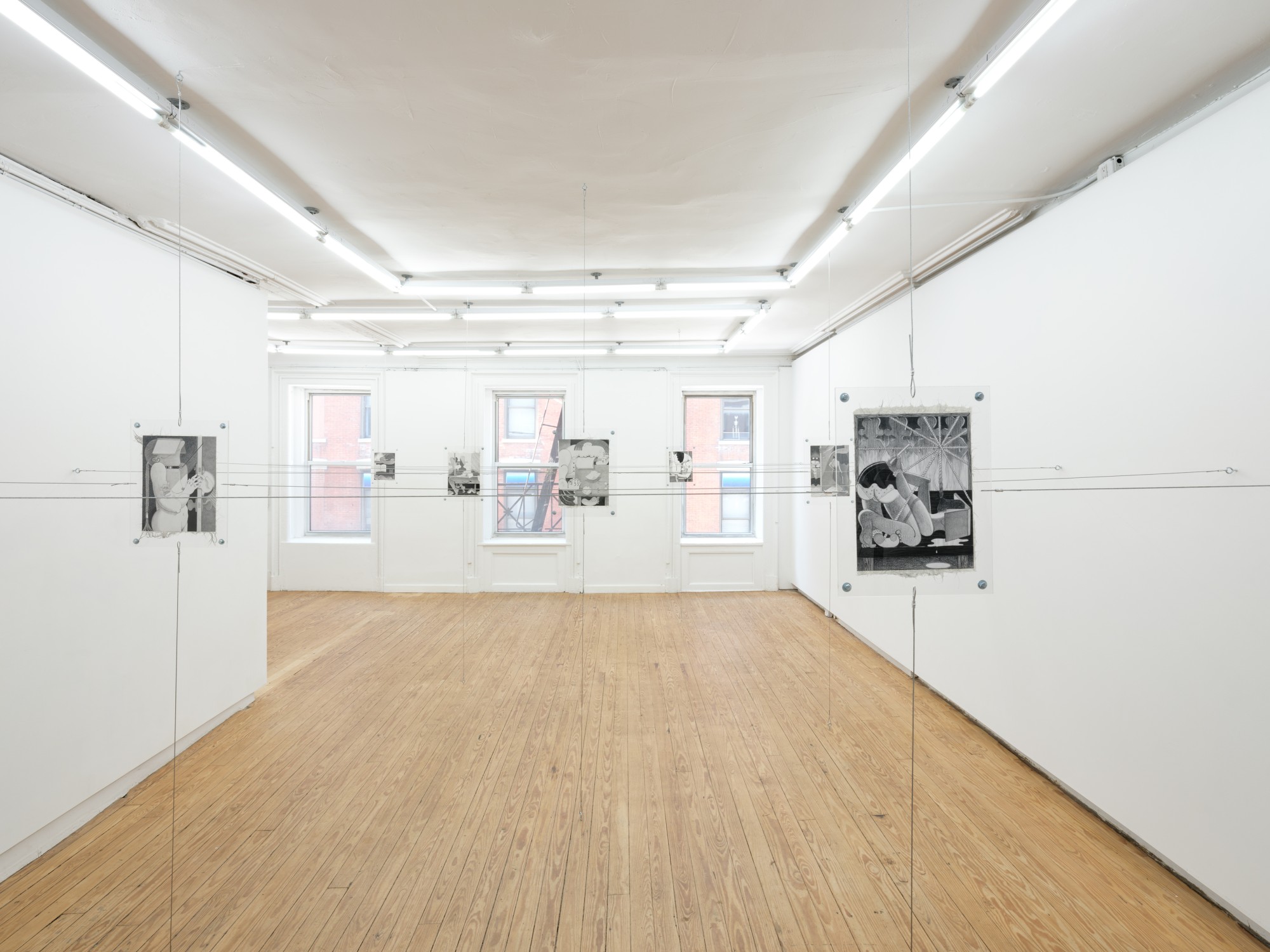
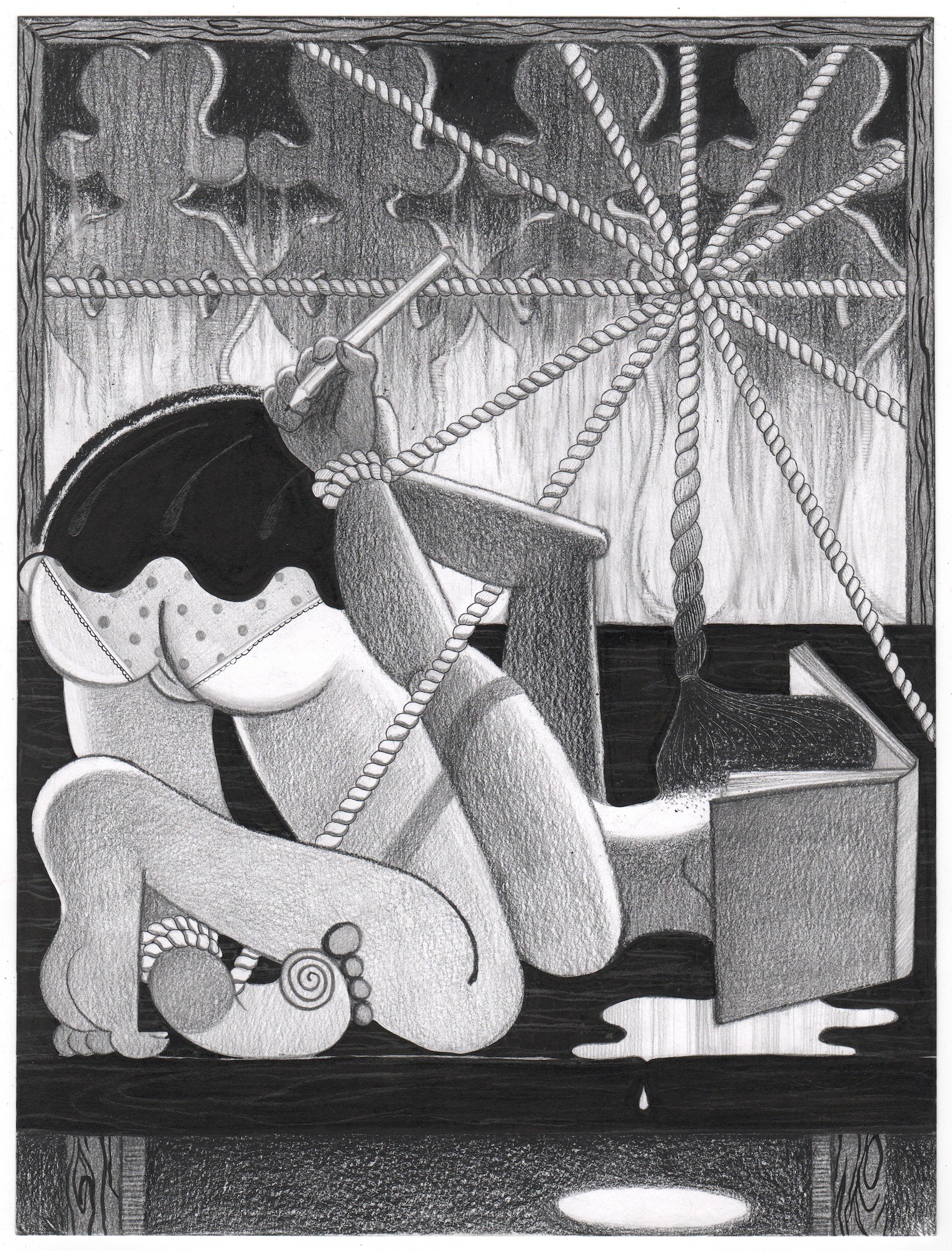
Workings of Pathos. 2019. 12" x 9". Graphite, charcoal, pastel, ink on paper
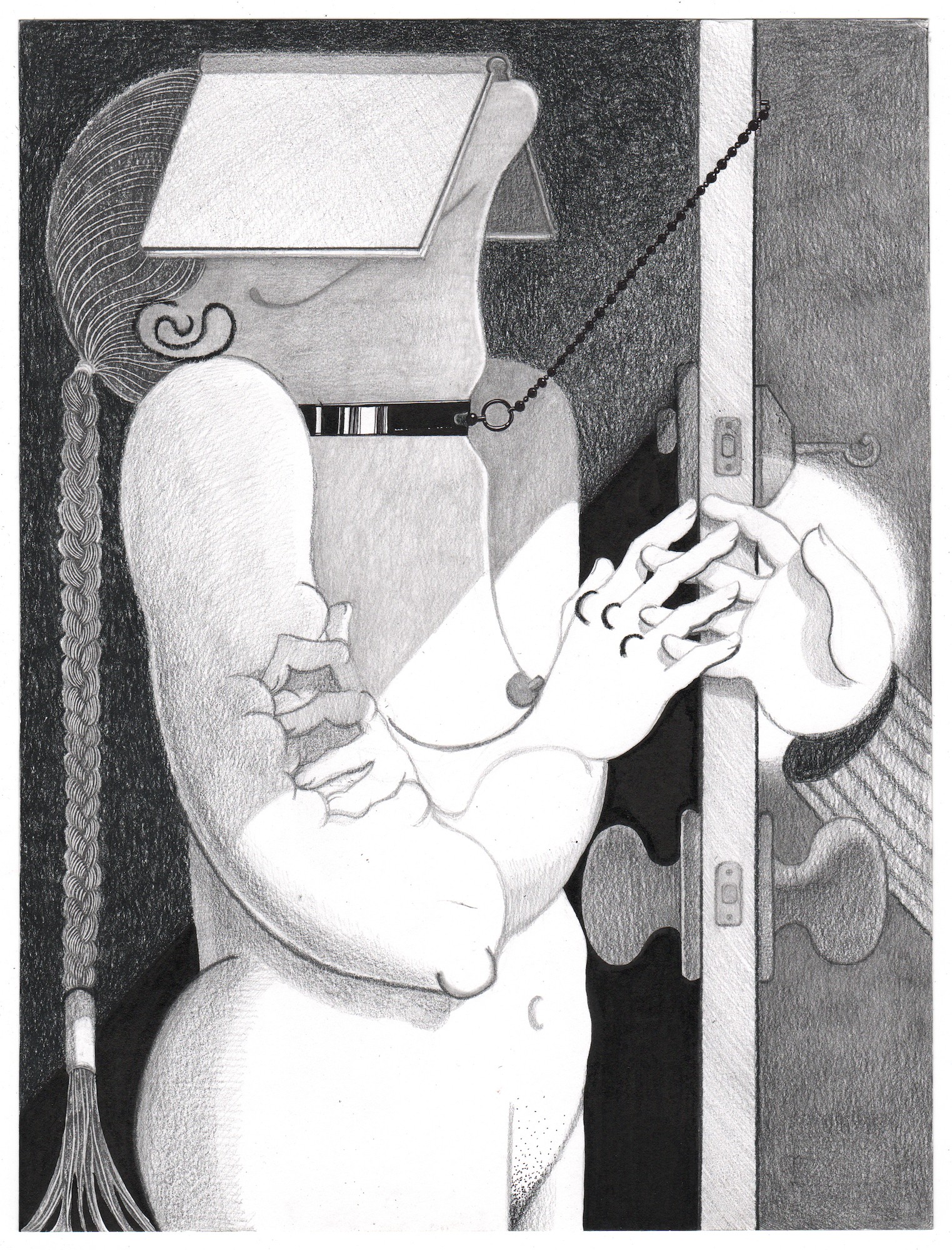
Metaphor Slut. 2019. 12" x 9". Graphite, charcoal, pastel, ink on paper
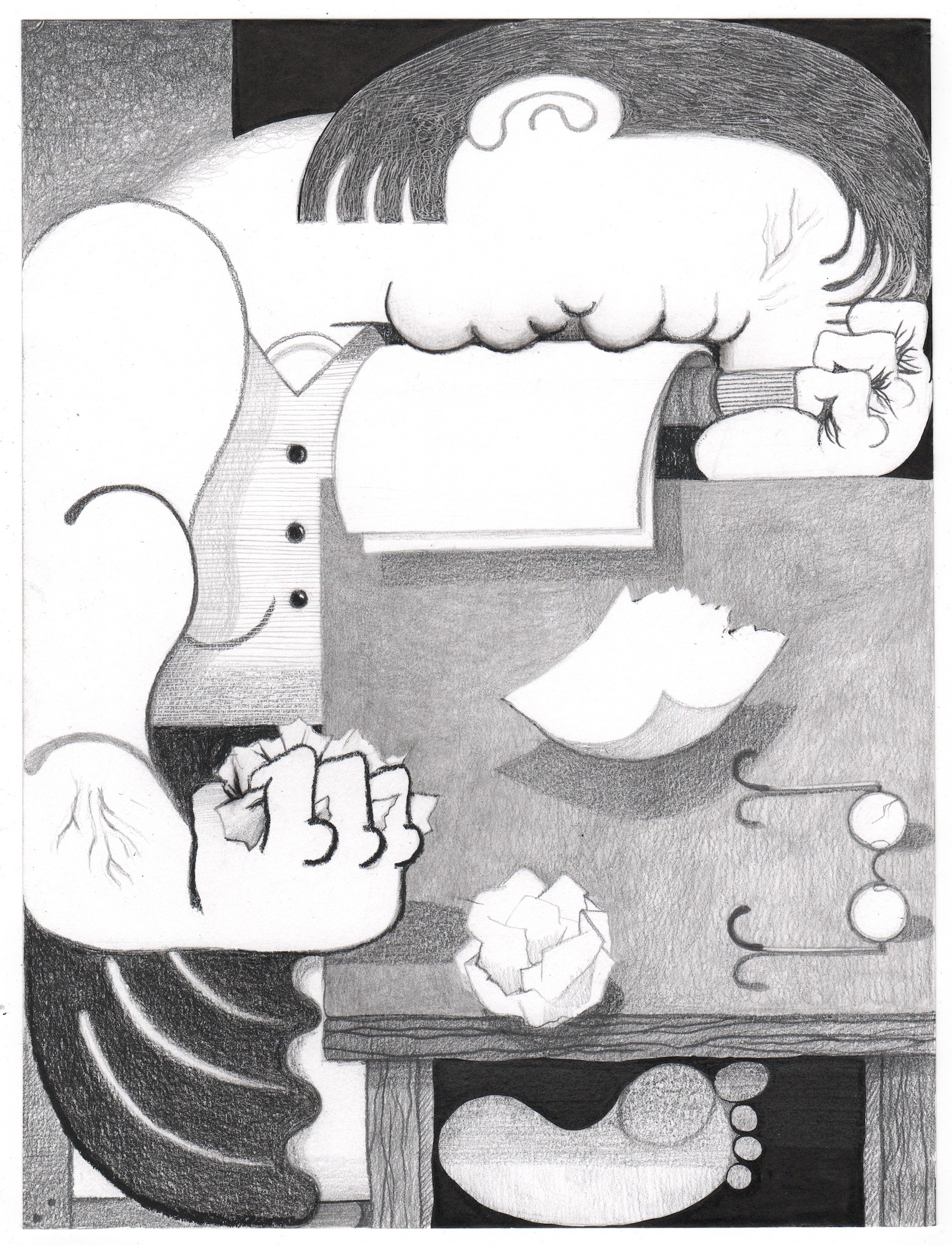
Poetry. 2019. 12" x 9". Graphite, charcoal, pastel, ink on paper

Knowledge Pervert. 2019. 12" x 9". Graphite, charcoal, pastel, ink on paper

Interpretation. 2019. 12" x 9". Graphite, charcoal, pastel, ink on paper
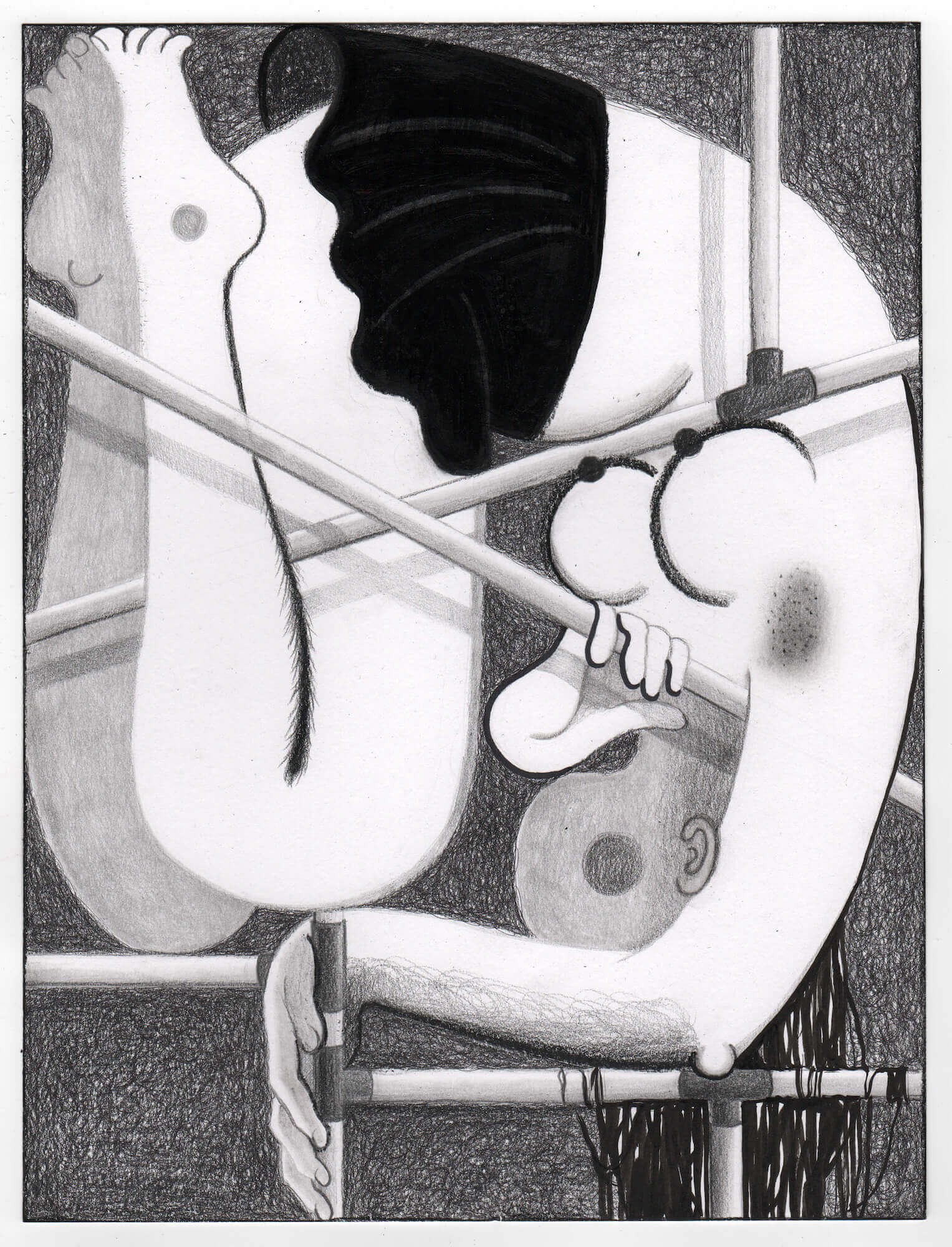
Character #13. 2019. 12" x 9". Graphite, charcoal, pastel, ink on paper
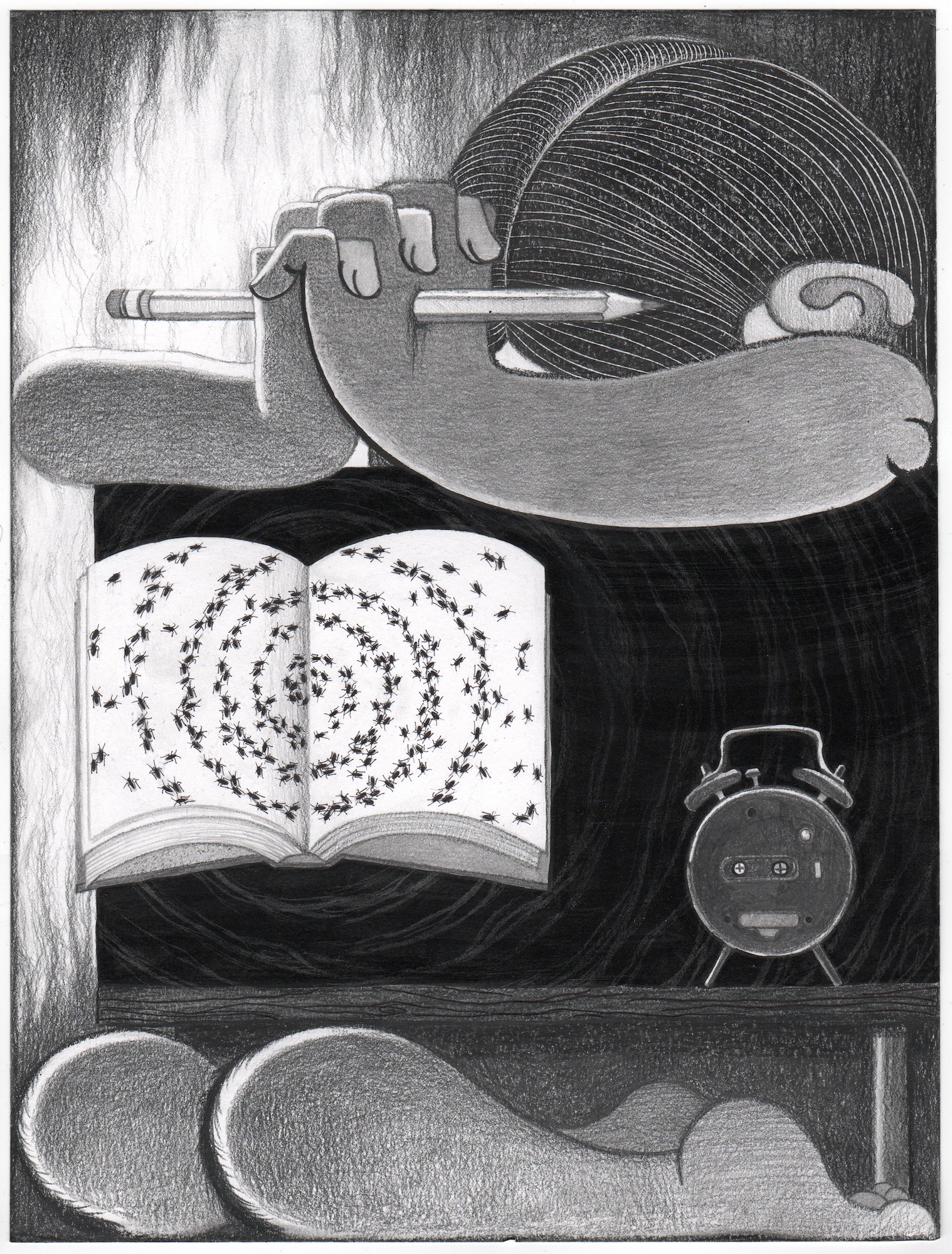
Creativity. 2019. 12" x 9". Graphite, charcoal, pastel, ink on paper
Foxy Production in collaboration with Helena Anrather is pleased to present Verses from the Apocalypse, an exhibition of new work by Cindy Ji Hye Kim. Comprising paintings, sculptures, and drawings across the two galleries, the artist explores our desire for and dependence on structural limits and boundaries in image-making.
The paintings and wall sculptures in Verses from the Apocalypse were inspired by a series of 16th century paintings of the Tower of Babel. These depictions, particularly those by Bruegel the Elder and the Van Valckenborch Brothers, place the top of the tower at the upper limit of the picture frame, reflecting the inability to reach the heavens and the folly of our inherent desire to do so. This desire, like our desire for the world to come that the apocalypse promises, provides a teleology that sustains our stories while remaining forever unfulfilled. With the hope of a single tower and a universal language no longer available, many of the paintings in Verses from the Apocalypse foreground scaffolding and theater sets – both essentially temporary structures – literalizing the boundaries that limit artistic representation while making it possible.
Though the show’s title suggests destruction and chaos, the paintings, all in the artist’s grisaille palette, depict improbably still scenes: theater sets stand vacant, monks float in circular formation, schoolgirls hold contorted poses. This eerie stillness is echoed in a pair of circular paintings in the form of phenakistoscopes, an early animation device. If incorporated in the necessary viewing apparatus and spun, the figures depicted in these paintings would climb ever upwards, or would appear to. Instead, they stand still in a loop, going nowhere. Also included are three paintings extending the artist’s Letter series, previously confined to works on paper. Inspired by the Korean alphabet, the works in this series depict schoolgirls as vowels, holding contorted poses around wooden and metal scaffolds, which serve as consonants.
Furthering the exposure of the structures that underlie artistic practice, two large paintings are hung in the middle of the gallery, displaying stretcher bars that have been cut into spines, bones, and the ominous figures depicted on the canvases. Four wall sculptures – miniature ready-made human organs secured by a vertical length of steel rope – continue the externalization of what figurative painting conceals.
In an installation of works on paper and a mural at Helena Anrather, Kim transforms the gallery into a psychological landscape exploring the erotic contortions of creative expression. Artistic efforts – pictorial and linguistic – are allegorized as erotic impositions on struggling schoolgirls: one experiences a cool breeze as she reclines with a book over her groin while voyeurs gaze on her through a window, another experiences a metaphor as a collar and chain binding her to a door. In others, inspired by the Korean alphabet, schoolgirls become vowels as they hold contorted poses around wooden and metal scaffolds, which serve as consonants.
The drawings themselves, like the figures they depict, are locked in place, suspended in the middle of the gallery through a system of steel wire cables spanning the gallery’s walls. The cables connect each drawing to the wall, ceiling, and floor, creating obstacles for viewers as they move through space. Hung at eye level, they are backed with paper Kim made from her own hair, embedding the artist’s presence in the work and gallery. A mural spanning the gallery’s walls depicts medieval Rota Fortunae of schoolgirls cycling through the struggles of the creative process, linking the drawings and their installation into a larger system of creative struggle.
Press release by Zach Weinstein
Photography by Charles Benton and Sebastian Bach